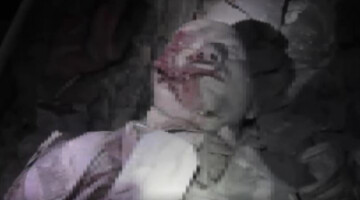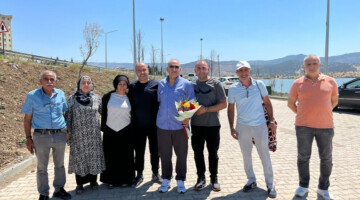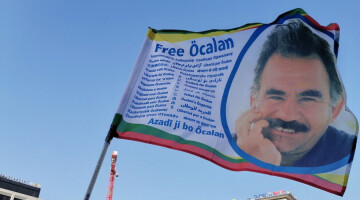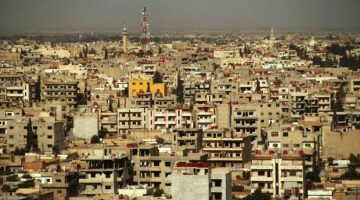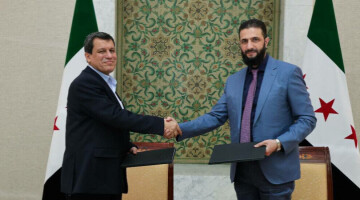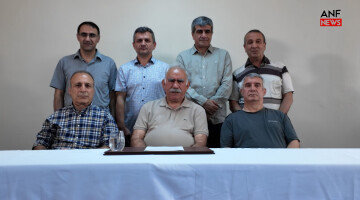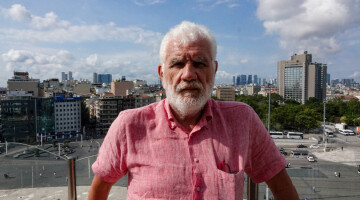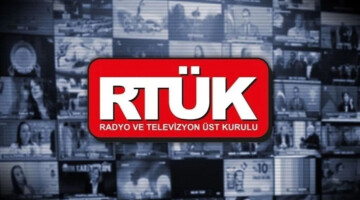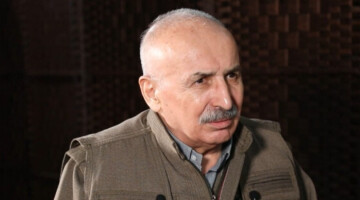Despite evidence on the direct involvement of dispatched diplomat-terrorists of the Islamic regime, the government of Austria sacrificed justice for its country’s political and commercial interests and allowed the three suspected killers, who had taken refuge in the Iranian embassy after the 1989 murders, to leave Austria without ever being questioned by the Austrian authorities.
Furthermore, Iranian intelligence officer Sahraroodi, one of the killers who had not been tried after 30 years, was to be greeted with a red carpet in Hewlêr years later.
New evidences emerged through the years on the Iranian regime’s involvement, including some implicating former president Mahmoud Ahmadinejad.
AFP reported that “a German citizen, who made his statement to Italian anti-Mafia officers in 2006, said he was in contact with Iranian intelligence services in 1989 regarding arms deals. Shortly before the killing, he said he delivered in the first week of July 1989 half a dozen light weapons at a meeting at the Iranian embassy in Vienna.”
Life and politics
Abdulrahman Qasimlo was born in Urmiye, in 1930.
He was a 16-year-old student preparing for university in Tehran when the flag of Kurdistan was raised in the Tsarchira square of Mahabad on 22 January 1946.
Qasimlo, when he was 14 he was already a member of the Communist Tudey party's youth branches, was worried about the collapse of Mahabad, the hanging of Qazi Muhammad in Tsarchira, and the news of his father's arrest in Tehran. This was the most important milestone in Qasimlo's life.
In 1957, Qasimlo was a lecturer at the University of Prague where he entered as a student. After 20 years of silence with Mahabad, the 'first bullet' of Eastern Kurdistan exploded in 1967 while he had set out on the path of science in Europe.
WIth a group of young people he started the resistance against the Shah Pahlavi administration with little opportunities.
While resistance continued in Eastern Kurdistan, Qasimlo took up the position of secretary general at the third congress of the Kurdistan Democratic Party of Iran (KDP-I) in 1973.
The slogan at the congress is the slogan that he will not give up until the end of his life and that he will speak a few minutes before being killed at the negotiating table in Vienna; "Democracy for Iran, autonomy for Kurdistan."
When Qasimlo returned to Prague in 1976, he was declared an 'unwanted man'. So he decided to settle in Paris. In addition to the leadership of KDP-I, he also took the title of doctor at the famous Sorbonne University of Paris and gave lectures here. When the Shah Pahlavi regime collapsed, Qasimlo returned to Kurdistan in November 1978.
On 1 February 1979, the plane carrying Khomeini was to take off from Paris and land in Tehran. In fact, Qasimlo visited Khomeini several times in his home in the Neauphle-le-Château district of Paris in the summer of 1978. When Khomeini declared his revolution 10 days after landing in Tehran, he said to the Kurds, "We will see you too."
However, Khomeini, who met with the Kurdish delegation on 28 March, said: "No Kurdish, Azeri, Persian, nation, no minorities. We are all from the community of Allah.
On 17 August 1979, Khomeini declared Qasimlo "enemy of God", and Kurdistan faced one of the greatest massacres in the second half of the 20th century. More than 10,000 Kurdish civilians were massacred during these times.
Balances chaning with the Iran-Iraq war
The Iran-Iraq war that erupted in 1980 would change the fate of the Eastern Kurdistan movement. The balance of war until 1984 was heavy: 10 thousand peshmergas lost their lives. Qasimlo, had taken its headquarters in the Kandil mountains on the East-South Kurdistan border. In the second half of the 1980s, with the initiatives of PUK leader Celal Talabani, he established his first contact with Tehran years later.
On 30 December 1988, the parties sat at the table in the house of Xebat Maruf of the PUK in Vienna's 9th district. Qasimlo did not give up his demand for "education in Kurdish mother tongue, Kurdish as the second official language" and negotiations were interrupted. When Khomeini died, Rafsanjani replaced him. He pushed the button for a new negotiation with Qasimlo.
This time, Fadil Resul, who lives in Vienna, entered the circuit. Resul, who has been living in Vienna since 1975 and doing his PhD at the Department of International Relations, was a good Kurdish lobbyist. He arranged the meetings of Kurdish leaders who came to Vienna.
However, Dr. Qasimlo insisted in Paris as a meeting place. But the Iranians said: "Either Vienna or Berlin. Paris will never be possible."
The plane carrying Qasimlo landed on 11 July in Vienna, coming from Paris.
After the words... the bullets
Dr. Qasimlo had made an appointment with the Austrian Interior Ministry at 4 pm on the evening of 13 July, prior to his meeting with the Iranians.
The meeting was held with the minister's chief adviser, Manfred Matzka. However, Matzka's secretary said he canceled the appointment. Why the meeting was canceled and what Qasimlo intends to say to the Austrian government is the most critical detail that remains unknown in the murder.
An hour later, Qasimlo had another appointment with the Iranian delegation. The meeting will take place at 17.30 on Linken Bahngasse street in the third district of Vienna.
Meanwhile, three Iranians, Cafer Sahraroodi, Mustafa Ajvadi and Amir Mansour Bozorgian had left the hotel and reached the meeting place. They had diplomat passports in their pockets and arrived in Vienna on 10 July. An eyewitness with the code 'Witness D' would then say that Mahmoud Ahmadinejad, who became president in 2005, was with them.
The parties gathered around the table in the hall and negotiations started. The meeting was recorded on an audio tape. Then the Austrian police announced that on the tape Qasimlo can be heard saying: "I'll come back empty-handed, and I can not say that Iran is working for the autonomy promised."
After the words, the bullets... Qasimlo was shot in the forehead, temples and neck, Rasul was shot in the head and neck with two bullets, and Abdullah Kadir Azeri was shot by a bullet.
There was a forgotten detail that day: 13 July 1989. It would have been the 40th birthday of Khomeini, the leader of the Iranian Islamic revolution, who had died on 3 June 1989.
Jafar Sahraroodi lay in blood on the stairs when the first police teams reached the building. His friend Mansour Bozorgian was shouting to the police he met outside, "They shot, shot my friend, save him." The shooting of Sahraroodi turned the whole plan upside down. Sahraroodi was taken to hospital under police surveillance, and Bozorgian was taken to the Schottenring police station.
However, Bozorgian was handed over to the Iranian Embassy where he would be kept for several days and later smuggled out of the country. On 22 July facing pressures from Tehran, Vienna surrendered and Sahraroodi was flown to his country.
Dr. Qasimlo and his friends were greeted as 'heroes' by the countries that massacred them. After returning to Iran, Mansour Bozorgian was promoted to the rank of general. He was appointed head of the Pasdaran headquarters in Urmia, Qasimlo's hometown.
Jafar Sahraroodi became the commander of the Jerusalem troops who carried out Iran's operations abroad after his duty in Vienna. In August 1996, he personally led the operation against the PDK-I headquarters in the village of Koy-i Kurdistan.
Both killers continued to travel across Europe. It turned out that Cafer Sahraroodi went to Switzerland and Croatia in October 2013. However, despite an international arrest warrant, both countries did not surrender him to Austria.
Furthermore, Sahraroodi was greeted in 2014 with a red carpet in Hewlêr. Sahraroodi was also present during the visit of the President of the Iranian Parliament Ali Larijani to South Kurdistan upon the invitation of the KDP.
Austria, who sent murderers to Tehran by escort, did its best to cover up the murder. The Vienna government would always say: "We did not have any pressure from Tehran."
However, in a 1997 public opinion poll published by the Presse newspaper, 55 per cent of Austrians said: 'The government allowed the killers to escape.'
In the 1990s, there was a noticeable growth of 60 percent in Austria's trade with Iran.


